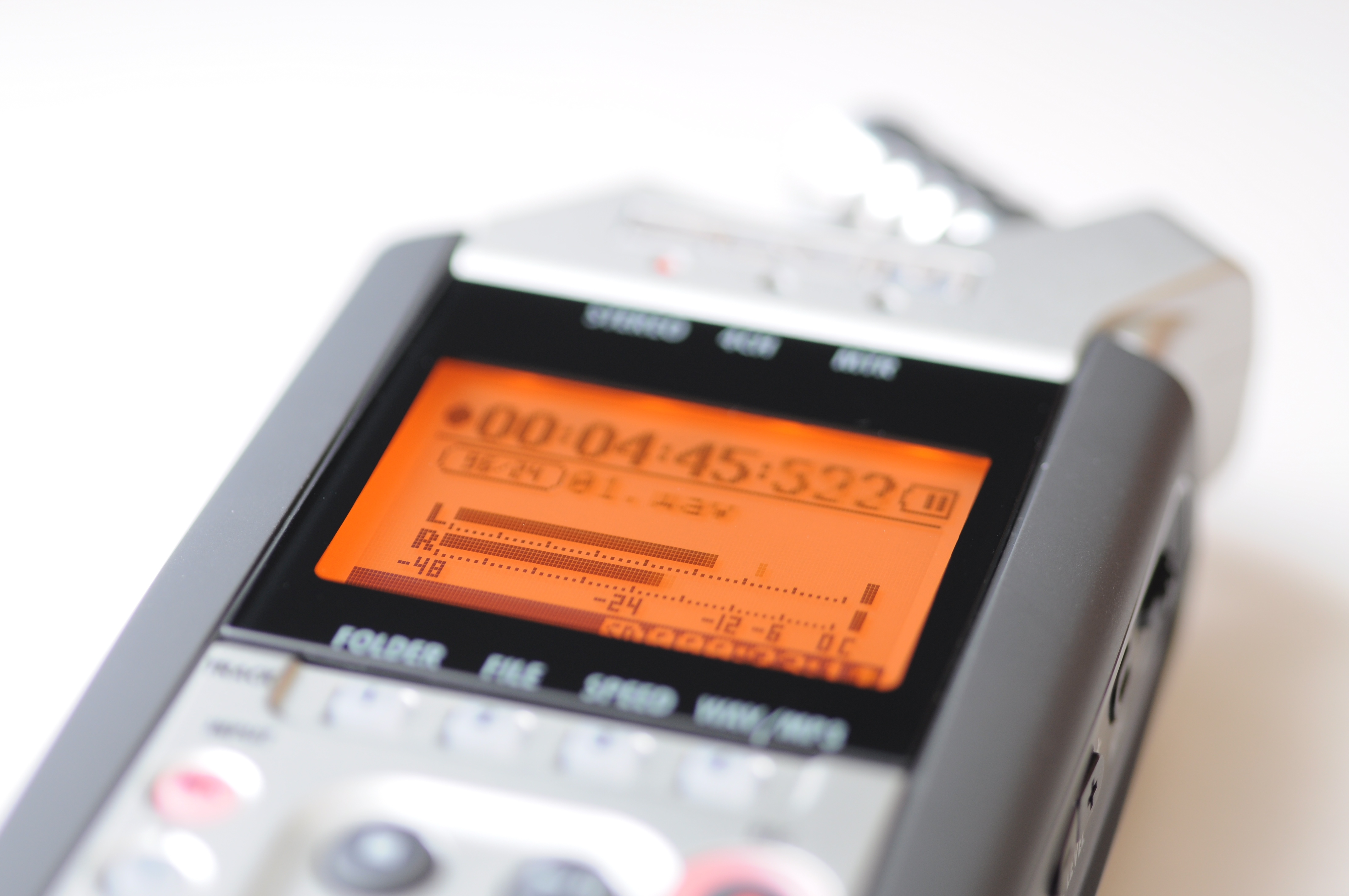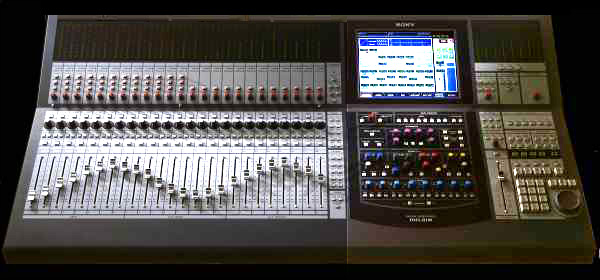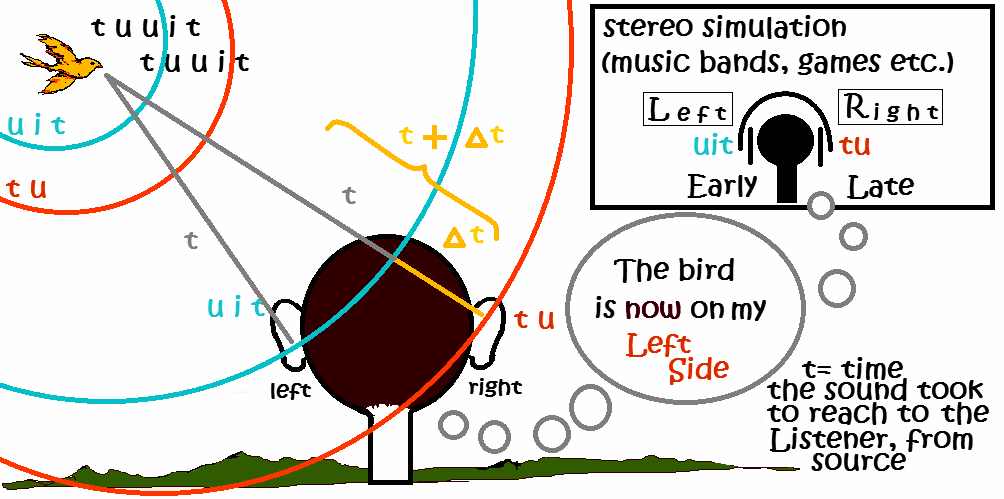|
Needle Drop (audio)
A needle drop is a version of a recording that has been transferred from a vinyl record to digital audio or other formats. Needle drops are sometimes traded among music collectors, especially when the original vinyl recording has not been released officially on a subsequent consumer format. It is also referred to as a "vinyl rip" or "record rip". Other reasons for trading needle drops include the lack of availability of certain recordings on digital media, the non-availability of less compressed versions in digital form, or the lack of availability of certain versions or mixes of that recording, e.g. mono or stereo versions, or the loss of the master tape. The term is thought to have been coined in 1949 by Peter Goldmark during the first rush of transfers of lacquer and 78 RPM records to the then-new long playing 33 ⅓ RPM format. Needledrop (usually as one word) is also used in the advertising industry for production music Production music (also known as stock music or l ... [...More Info...] [...Related Items...] OR: [Wikipedia] [Google] [Baidu] |
Vinyl Record
A phonograph record (also known as a gramophone record, especially in British English) or a vinyl record (for later varieties only) is an analog signal, analog sound Recording medium, storage medium in the form of a flat disc with an inscribed, modulated spiral groove. The groove usually starts near the outside edge and ends near the center of the disc. The stored sound information is made audible by playing the record on a phonograph (or "gramophone", "turntable", or "record player"). Records have been produced in different formats with playing times ranging from a few minutes to around 30 minutes per side. For about half a century, the discs were commonly made from shellac and these records typically ran at a rotational speed of 78 rpm, giving it the nickname "78s" ("seventy-eights"). After the 1940s, "vinyl" records made from polyvinyl chloride (PVC) became standard replacing the old 78s and remain so to this day; they have since been produced in various sizes and speeds, mos ... [...More Info...] [...Related Items...] OR: [Wikipedia] [Google] [Baidu] |
Digital Audio
Digital audio is a representation of sound recorded in, or converted into, digital signal (signal processing), digital form. In digital audio, the sound wave of the audio signal is typically encoded as numerical sampling (signal processing), samples in a continuous sequence. For example, in CD audio, samples are taken 44,100 Hertz, times per second, each with 16-bit audio bit depth, resolution. Digital audio is also the name for the entire technology of sound recording and reproduction using audio signals that have been encoded in digital form. Following significant advances in digital audio technology during the 1970s and 1980s, it gradually replaced comparison of analog and digital recording, analog audio technology in many areas of audio engineering, record production and telecommunications in the 1990s and 2000s. In a digital audio system, an analog signal, analog electrical signal representing the sound is converted with an analog-to-digital converter (ADC) into a digital ... [...More Info...] [...Related Items...] OR: [Wikipedia] [Google] [Baidu] |
Digital Media
In mass communication, digital media is any media (communication), communication media that operates in conjunction with various encoded machine-readable data formats. Digital content can be created, viewed, distributed, modified, listened to, and preserved on a digital electronic device, including digital data storage media (in contrast to analog electronic media) and digital broadcasting. ''Digital'' is defined as any data represented by a series of digits, and ''media'' refers to methods of broadcasting or communicating this information. Together, ''digital media'' refers to mediums of digitized information broadcast through a screen and/or a speaker. This also includes text, audio, video, and graphics that are transmitted over the internet for viewing or listening to on the internet. Digital media platforms, such as YouTube, Kick (service), Kick, and Twitch (service), Twitch, accounted for viewership rates of 27.9 billion hours in 2020. A contributing factor to its part in wha ... [...More Info...] [...Related Items...] OR: [Wikipedia] [Google] [Baidu] |
Dynamic Range Compression
Dynamic range compression (DRC) or simply compression is an audio signal processing operation that reduces the volume of loud sounds or amplifies quiet sounds, thus reducing or ''compressing'' an audio signal's dynamic range. Compression is commonly used in sound recording and reproduction, broadcasting, sound reinforcement system, live sound reinforcement and some instrument amplifiers. A dedicated electronic hardware unit or audio software that applies compression is called a compressor. In the 2000s, compressors became available as software plugins that run in digital audio workstation software. In recorded and live music, compression parameters may be adjusted to change the way they affect sounds. Compression and limiting are identical in process but different in degree and perceived effect. A limiter is a compressor with a high #Ratio, ratio and, generally, a short #Attack and release, attack time. Compression is used to improve performance and clarity in public address ... [...More Info...] [...Related Items...] OR: [Wikipedia] [Google] [Baidu] |
Audio Mixing (recorded Music)
In sound recording and reproduction, audio mixing is the process of optimizing and combining multitrack recordings into a final mono, stereo or surround sound product. In the process of combining the separate tracks, their relative levels are adjusted and balanced and various processes such as equalization and compression are commonly applied to individual tracks, groups of tracks, and the overall mix. In stereo and surround sound mixing, the placement of the tracks within the stereo (or surround) field are adjusted and balanced. Audio mixing techniques and approaches vary widely and have a significant influence on the final product. Audio mixing techniques largely depend on music genres and the quality of sound recordings involved. The process is generally carried out by a mixing engineer, though sometimes the record producer or recording artist may assist. After mixing, a mastering engineer prepares the final product for production. Audio mixing may be performed on a ... [...More Info...] [...Related Items...] OR: [Wikipedia] [Google] [Baidu] |
Monaural
Monaural sound or monophonic sound (often shortened to mono) is sound intended to be heard as if it were emanating from one position. This contrasts with stereophonic sound or ''stereo'', which uses two separate audio channels to reproduce sound from two microphones on the right and left side, which is reproduced with two separate loudspeakers to give a sense of the direction of sound sources. In mono, only one loudspeaker is necessary, but, when played through multiple loudspeakers or headphones, identical audio signals are fed to each speaker, resulting in the perception of one-channel sound "imaging" in one sonic space between the speakers (provided that the speakers are set up in a proper symmetrical critical-listening placement). Monaural recordings, like stereo ones, typically use multiple microphones fed into multiple channels on a recording console, but each channel is " panned" to the center. In the final stage, the various center-panned signal paths are usually mix ... [...More Info...] [...Related Items...] OR: [Wikipedia] [Google] [Baidu] |
Stereo
Stereophonic sound, commonly shortened to stereo, is a method of sound reproduction that recreates a multi-directional, 3-dimensional audible perspective. This is usually achieved by using two independent audio channels through a configuration of two loudspeakers (or stereo headphones) in such a way as to create the impression of sound heard from various directions, as in natural hearing. Because the multi-dimensional perspective is the crucial aspect, the term ''stereophonic'' also applies to systems with more than two channels or speakers such as quadraphonic and surround sound. Binaural sound systems are also ''stereophonic''. Stereo sound has been in common use since the 1970s in entertainment media such as broadcast radio, recorded music, television, video cameras, cinema, computer audio, and the Internet. Etymology The word ''stereophonic'' derives from the Greek (''stereós'', "firm, solid") + (''phōnḗ'', "sound, tone, voice") and it was coined in 1927 by ... [...More Info...] [...Related Items...] OR: [Wikipedia] [Google] [Baidu] |
Master Tape
Master recordings, or simply masters, are the original recordings—including Mastering (audio), post-recording mixes and Record production, production edits—of audio performances, from which all analog and digital copies of the audio are derived from. The term refers only to the recorded performance of a song; it does not cover the composition of recorded material, which is a separate copyright that belongs to the songwriter unless ownership of the copyright is transferred or sold to a separate entity. References Copyright law legal terminology {{Sound-tech-stub ... [...More Info...] [...Related Items...] OR: [Wikipedia] [Google] [Baidu] |
Billboard Magazine
''Billboard'' (stylized in lowercase since 2013) is an American music and entertainment magazine published weekly by Penske Media Corporation. The magazine provides music charts, news, video, opinion, reviews, events and styles related to the music industry. Its music charts include the Hot 100, the 200, and the Global 200, tracking the most popular albums and songs in various music genres. It also hosts events, owns a publishing firm and operates several television shows. ''Billboard'' was founded in 1894 by William Donaldson and James Hennegan as a trade publication for bill posters. Donaldson acquired Hennegan's interest in 1900 for $500. In the early years of the 20th century, it covered the entertainment industry, such as circuses, fairs and burlesque shows, and also created a mail service for travelling entertainers. ''Billboard'' began focusing more on the music industry as the jukebox, phonograph and radio became commonplace. Many topics that it covered became ... [...More Info...] [...Related Items...] OR: [Wikipedia] [Google] [Baidu] |
Peter Carl Goldmark
Peter Carl Goldmark (born Péter Károly Goldmark; December 2, 1906 – December 7, 1977) was a Hungarian-American engineer who, during his time with Columbia Records, was instrumental in developing the long-playing microgroove 33 rpm phonograph disc, the standard for incorporating multiple or lengthy recorded works on a single disc for two generations. The LP was introduced by Columbia's Goddard Lieberson in 1948. Lieberson was later president of Columbia Records from 1956–1971 and 1973–1975. According to György Marx, Goldmark was one of The Martians. Early life Goldmark married Frances Trainer, whom he later divorced. Together they had four children; three sons: Peter Jr., Christopher, Andrew and one daughter: Frances. After divorcing Frances Trainer, Goldmark married Diane Davis and had two more children: Jonathan and Susan. Career In addition to his work on the LP record, Goldmark developed field-sequential color technology for color television while at C ... [...More Info...] [...Related Items...] OR: [Wikipedia] [Google] [Baidu] |
Gramophone Record
A phonograph record (also known as a gramophone record, especially in British English) or a vinyl record (for later varieties only) is an analog sound storage medium in the form of a flat disc with an inscribed, modulated spiral groove. The groove usually starts near the outside edge and ends near the center of the disc. The stored sound information is made audible by playing the record on a phonograph (or "gramophone", "turntable", or "record player"). Records have been produced in different formats with playing times ranging from a few minutes to around 30 minutes per side. For about half a century, the discs were commonly made from shellac and these records typically ran at a rotational speed of 78 rpm, giving it the nickname "78s" ("seventy-eights"). After the 1940s, "vinyl" records made from polyvinyl chloride (PVC) became standard replacing the old 78s and remain so to this day; they have since been produced in various sizes and speeds, most commonly 7-inch discs pla ... [...More Info...] [...Related Items...] OR: [Wikipedia] [Google] [Baidu] |
Production Music
Production music (also known as stock music or library music) is recorded music that can be music licensing, licensed to customers for use in film, television, radio and other media. Often, the music is produced and owned by production music libraries. Background Unlike popular and classical music publishers, who typically own less than 50 percent of the copyright in a composition, production music libraries own all of the copyrights of their music. Thus, it can be licensed without the composer's permission, as is necessary in licensing music from normal publishers. This is because virtually all music created for music libraries is done on a work for hire, work-for-hire basis. Production music is a convenient solution for media producers—they are able to license any piece of music in the library at a reasonable rate, whereas a specially commissioned work could be prohibitively expensive. Similarly, licensing a well-known piece of popular music could cost anywhere from tens to ... [...More Info...] [...Related Items...] OR: [Wikipedia] [Google] [Baidu] |






